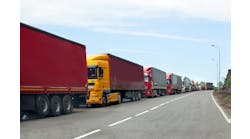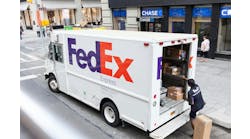Companies are sending the wrong message about outsourcing if their decision suggests the outsourced processes or functions are not core to their business, says John Madrid, executive v.p. for strategy, knowledge and services at Procuri Inc. (Atlanta, Ga., www.procuri.com). "People in the company and the people they hire [including third party logistics firms, 3PLs] all get that message," says Madrid.
Madrid, who spent 25 years with Procter & Gamble, notes that most companies are in very competitive markets. Every point of market share counts. "And having an effective supply management system is critical to your success," he says.
Madrid adds that outsourcing should provide critical skills that don't exist in the organization or can't be built in time. That raises the stakes for outsourcing and it needs a corresponding upgrade in attitude that recognizes the importance of the function that was outsourced and sets key performance metrics for the 3PL.
Adding fuel to Madrid's argument, Peter Scott, v.p. of marketing and corporate development for Exostar (Herndon, Va. www.exostar.com), says outsourcing carries many risks that can cripple a business if not handled properly. Sole sourcing, says Scott, offers better leverage in negotiations that can result in some price advantages, but it also creates single points of failure, whether the sourcing arrangement is for materials and components or for logistics services. Both Madrid and Scott advocate setting key performance indicators and then measuring performance against them.
Scott says that many organizations that outsource reduce their workforce. Whether by downsizing or attrition, the organization is left with fewer people to address problems when they arise, a possible skill gap and less institutional memory. The company then becomes more reliant on the 3PL to keep things moving and recover when there is a failure.
Despite the consolidation within the 3PL industry, says Mario Hegewald, director of global logistics for Eaton Corp. (Cleveland, Ohio www.eaton.com), no single logistics provider is capable of delivering all services in all areas at a consistent level. The only company he saw with that capability was his previous employer, a global manufacturer that invested in a global transportation management system and built the tool its 3PLs use to manage their portion of that company's supply chain.
For Eaton today, "Freight management is where 3PLs shine," says Hegewald. But even in this, Eaton has multiple suppliers. The previous "build your own" implementation Hegewald participated in took five years and it wasn't always the most efficient way to operate, he admits. At Eaton, corporate culture tends towards "buy" rather than "build" and Hegewald relies on six different 3PLs for their functional expertise and regional knowledge and capabilities. In describing his current undertaking, Hegewald would likely admit it isn't less challenging, it's just a different set of challenges.
Eaton's stable of providers includes some competitors, and here, Hegewald adds a general observation that 3PLs and companies providing lead logistics provider (LLP) services are still struggling with the concept of true partnership. Hegewald is moving Eaton towards appointing one lead logistics provider and having the other 3PLs communicate through that company's systems. He says one of the current challenges is the handoff between carriers and 3PLs. That's where he loses visibility in the network, and it's something that could take a big step forward as the 3PLs begin to integrate under a lead logistics provider.
Losing visibility is another of the outsourcing risks that Exostar's Scott highlights. In effect, outsourcing can trade better control over costs and reduced capital overhead for less of the granular visibility and control of what's happening in the supply chain. International moves are more complex and can be frustrating, agrees Procuri's Madrid, even when you think you have it all set up properly.
Madrid offers the example of one high-tech company that shipped product from an overseas source. The goods arrived at the dock for export and were validated by a government inspector. At some time after the receipt had been validated, the goods were stolen from the dock.
Even when you think you have things set up properly, he says, there is more complexity on the foreign side to get your goods to the right places, secure them and get them delivered in a timely manner. The local knowledge and presence of the 3PL can help ensure problems are minimized and disruptions are communicated. In an extended, global supply chain, even with the visibility to see that a failure has occurred, there is less recovery time, says Scott. Inventories are low and lead times and transit times can be long. Madrid says selection of a 3PL has to get very granular. That means getting close to the people who are handling the operations and being clear on your scorecard of performance measures.
"You can talk to the senior vice president level people in the 3PL and, overall, that company may have excellent results," he explains. "But when it gets down to the mechanics and the process for your company, you want a high level of ownership [of the process and the results] and that has to be there whether they have another 100 customers besides you."
Eaton's selection of Ceva Logistics (Hoofdorp, the Netherlands, www.cevalogistics.com) as its lead logistics provider for the Asia Pacific region took a year, according to Hegewald. Under its agreement, Ceva will manage Eaton's supply chain in the Asia Pacific region, including warehousing, domestic road transport and global distribution.
Hegewald uses other lead logistics providers in other regions, noting that Penske Logistics (Reading, Pa., www.penskelogistics.com) was selected for its strengths in the U.S., Mexico, South America and Europe. In addition to regional expertise, Eaton contracts for functional strengths, using Cass Information Systems (St. Louis, Mo., www.cassinfo.com) for freight bill payment and audits in North America and Logistics Management Solutions (St. Louis, Mo., www.lmslogistics.com) for its North American database of preferred carriers. Other 3PLs fill roles in freight forwarding and customs brokerage.
Eaton's hybrid network of 3PLs have very specific skills and capabilities. As one of those suppliers, Dennis Schoemehl, president and CEO of Logistics Management Systems, is clear about the role of his company.
"We are a North American transportation execution company," he says. As such, LMS focuses on managing and measuring the performance of the North American transportation network for its customers. It looks for opportunities to mode shift to provide savings, moving parcel shipments to less-than-truckload (LTL) and LTL to truckload and truckload shipments to intermodal. Commenting on the growth of 3PLs, Schoemehl acknowledges that many have expanded services, often pulled in that direction by customers. LMS has been asked to get into warehouse services, he says, but decided to stay away from it.
"We have warehouse 3PLs who call on us for transportation management," he notes, but the company has focused on growing within its area of expertise. There are anywhere from 350,000 to 400,000 truckload carriers operating in the United States, he points out. If that isn't enough complexity to manage and measure, there are new demands in transportation management such as transloading services that challenge his company to grow and develop within its area of expertise.
Schoemehl says that as the 3PL segment has evolved, "there are 3PLs in the warehouse side that really grew up in that business and now want to be a single-source solution, and you have those that were in transportation that now provide warehousing. If you grew up in transportation, that's what you know." When evaluating a 3PL's capabilities, he suggests asking, "What are their roots, where did they come from?"
The functions on the shipper's side have changed and evolved as well, says Schoemehl. The development of enterprise resource planning (ERP) systems means that many of the functions that had been at the plant level are now centralized. This has expanded the role of the transportation management company to include invoicing, shipment status, claims resolution and a host of other functions. As the industry continues to evolve, Schoemehl sees more consolidation and, eventually, more real collaboration. From his transportation management perspective, this opens the door to more continuous moves, including dynamic, multi-shipper continuous moves. He also sees shippers cooperating on cross dock opportunities and "virtual truck lines."
In this complex supply chain of multiple 3PLs in regions around the globe, technology is simplifying communication and overcoming some of the visibility concerns. It is even helping companies gain more of the needed control. But on a larger scale, Exostar's Scott says that shared incentives among, a common set of processes and metrics, more automatic processes and information flows between systems and people across the various partner companies and managing by exception, will all be key factors in successful supply chain management.
"Unless you make the collaboration performance a key performance indicator," agrees Eaton's Hegewald, "[the 3PLs] will come back with the conventional performance measures." With many companies that see outsourcing as a means to reduce costs, that means cost reductions. For logistics executives like Hegewald, the stakes are much larger.
"The 3PLs typically want to manage functions and don't have a willingness to learn my business and bring innovative solutions," he says.
Procuri's Madrid says a software company or a 3PL service is "no longer just a tactical tool for execution, it also has to provide strategic value the shipper can use to create business plans that are intended to drive improvement through the whole supply chain. I'm expected to deliver core-like quality in order to maintain this relationship." Madrid still sees companies—even very large multi-national companies— that "have not gotten the fact that total supply chain effectiveness really delivers their bottom line."
| Cost Still a Priority of Supply Chains To accomplish these business objectives, almost half of supply chain executives were working on eliminating waste and unnecessary steps (lean supply chain). Other top priorities were general operational improvement programs and leveraging economies of scale across multiple operating units. The survey also uncovered several capability gaps in the technologies the respondents were using to enable integration of their trading partners. Many still use paper and fax, and 29% still use computer spreadsheets to manage their supply chain. Only 44% use electronic data interchange (EDI) and 42% say they use e-mail. |


